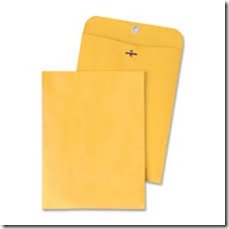Last week, I sent a submission via snail mail. “What’s that?” you ask. It’s almost a forgotten art. I hadn’t sent out a physical manuscript in so long that I’d forgotten the specifics. I think it’s been at least five years, likely longer, since I last had to send anything from the post office. This submission went to a niche market and was another of my father’s travel journals.
So what was involved? After reading the online submission guidelines, I reviewed my manuscript. Oops, I’d forgotten all about headers and footers with the book title, author name, and page number. Having formatted for ebook requirements, I added those back in.
Since this book is nonfiction, I had to include a Table of Contents. No problem. I know how to do this in Word. Oh, wait. I forgot to write a Foreword like I did with my father’s other journal, Thumbs Up, that I’d indie published. So I added the TOC. Then I deleted some of the book buy hyperlinks in the back. I shouldn’t include those for this type of submission.
A query letter topped it all off. I polished mine once more before adding it to the pile of papers. It’s also been ages since I’d had to write one of these things. It’s never easy, is it?
Now what? I printed out the whole work, since it is short and about equivalent to a normal book proposal in page count. Next came the SASE. How do you do this again? If you want the manuscript back, you have to put actual postage stamps on a suitably sized manila envelope. This means you have to weigh the envelope for return postage with the manuscript inside, affix the stamps, remove the pages and stuff them into the outer envelope along with the folded SASE. A complicated business, isn’t it? Or you can just include a stamped and self-addressed #10 business envelope for the form rejection letter you’re sure to get.
And then comes the great sigh of relief when you send your baby off at the post office. This generates a more visceral response than sending a book into cyberspace. Somehow the physical manuscript seems more a part of you.
Weeks pass and then months. You watch the mail for the return envelope. Once you see it, gloom sets in. You’ve been rejected. And you start the process all over again.
At least that’s how it used to be done in the old days. Do you remember those times? Do you miss them?





